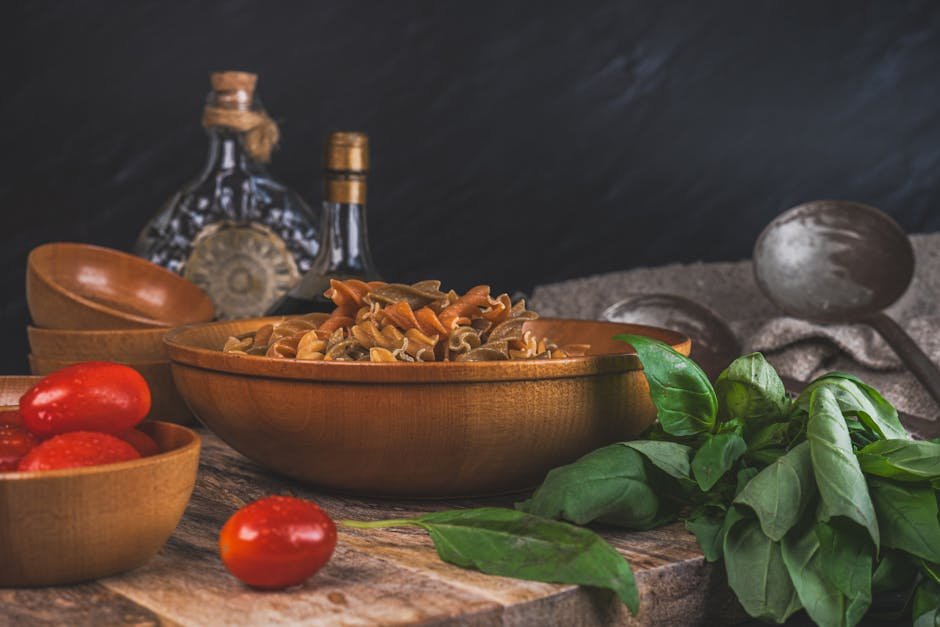Exploring the Diversity of Italian Meals: From Pasta to Gourmet Sandwiches
Introduction to Italian Cuisine: Beyond Pizza and Pasta
Italian cuisine is more than just pizza and pasta. It's a treasure trove of flavors and traditions from different regions, each bringing its unique taste to the table. Start expanding your culinary horizons beyond the usual suspects. For example, dive into the world of risottos, creamy and comforting dishes from the north, cooked slowly to perfection. Don't miss out on trying seafood delicacies along the coast, where fresh catches are turned into exquisite meals. And let's not forget about gourmet sandwiches like Panini and Tramezzini, packed with a variety of ingredients and perfect for a quick, yet indulgent bite. Italian cuisine is about exploring these diverse tastes and understanding how simplicity and quality ingredients create meals that stick in your memory long after the last bite. Dive in and let your taste buds guide you through Italy's culinary landscape, far beyond the common favorites of pizza and pasta.
The Rich History of Italian Meals
Italian meals don't just fill your stomach; they tell stories of centuries past. Think of it as eating through history. Italy's culinary journey began around 4th century BC. Yes, that long ago. Back then, it was all about simple, hearty meals. The Romans, they were big on grains, fruits, and vegetables. Meat? That was a luxury, reserved for the elites.
Fast forward to the Middle Ages. That's when pasta entered the scene. But, not the pasta we know today. It was a bit different, more of a luxury again. Only in the 17th century did pasta become a staple for all Italians, thanks to Naples.
Now, let's talk about tomatoes. You can't imagine Italian food without them, right? But here's a twist – tomatoes arrived in Italy in the 16th century, all the way from the Americas. Took a while, but by the 18th century, tomatoes were all over Italian dishes.
Cheese and wines, staples of Italian cuisine, also have rich histories. Regions across Italy have perfected their cheese-making and winemaking over centuries, giving us the diverse range of Italian flavors we celebrate today.
So, every time you dive into an Italian meal, remember, you're savoring centuries of history and tradition. From the humble grains of the Romans to the gourmet sandwiches and refined pastas of today, Italian cuisine is a delicious journey through time.
Exploring Regional Italian Pasta Dishes
Italian pasta dishes are a deep dive into the country's rich regional diversity. Each area boasts its unique takes, ingredients, and preparation methods, turning simple pasta into a culinary adventure. Let's start with the north, Lombardy, where you'll find Pizzoccheri, a hearty, buckwheat pasta dish, packed with greens and potatoes, and layered with melted cheese. Move down to Emilia-Romagna, the birthplace of Tagliatelle al Ragù, commonly known overseas as Bolognese. This region prides itself on rich, meat-based sauces combined with wide, flat pasta.
Dropping further south, Tuscany brings us Pici, a thick, hand-rolled pasta often served with a garlic tomato sauce or game ragù. Over in the coastal regions like Liguria, you'll be treated to Trofie al Pesto, a dish showcasing freshly made basil pesto, unlike any pesto you’ve tasted before.
Traveling all the way down to the heel of Italy’s boot, Apulia, introduces you to Orecchiette con Cime di Rapa, ear-shaped pasta served with a slightly bitter turnip greens sauce, beautifully balanced with garlic and anchovy.
Each of these dishes tells the story of Italian culinary artistry, local traditions, and the richness of regional ingredients. The exploration of Italian pasta dishes is not just about tasting different types of pasta; it's a journey through Italy's heartlands, discovering the soul of its many regions.
The Art of Italian Gourmet Sandwiches
Italian gourmet sandwiches, or panini as they're known locally, are not your ordinary sandwiches. These culinary masterpieces go beyond just bread and filling. They embody the essence of Italian cuisine—quality ingredients, simplicity, and passion. First off, the bread. It’s not just any bread; it's artisanal, often baked on the same day and ranging from crispy ciabatta to soft, olive oil-rich focaccia. Then, the fillings. Quality is king. Think of thinly sliced prosciutto, succulent mortadella, creamy mozzarella, and the freshest of basil leaves. Cheese and meat play lead roles, but there's also a symphony of other ingredients like grilled vegetables, a drizzle of balsamic glaze, or a spread of truffle oil taking the flavor to another level. Crafting these sandwiches is an art. Layering each ingredient carefully ensures every bite is a mix of flavors that complement each other perfectly. So, when you bite into an Italian gourmet sandwich, you're not just eating; you're experiencing centuries of Italian culinary tradition.
Italian Soups and Stews: A Comfort Food Journey
Italian soups and stews stand as pillars of comfort food, warming hearts and bellies across the globe. Imagine a chilly evening wrapped in the coziness of a hearty minestrone or the rustic embrace of a ribollita, thickened with bread and packed with vegetables. These dishes showcase the simplicity and depth of Italian cuisine. Minestrone, for one, mixes vegetables like onions, beans, carrots, and celery with pasta or rice in a savory tomato broth. No strict recipe exists for minestrone, making it a bowl of endless possibilities, reflecting the season's bounty or the contents of your fridge. On the other hand, ribollita tells a tale of thrift, transforming yesterday's soup and stale bread into today's feast, a testament to Italian resourcefulness. Both dishes share a common thread: they're slow-cooked, letting flavors meld and deepen, turning simple ingredients into something magical. This culinary journey through Italian soups and stews not only warms you up but also offers a taste of Italy's rich culture and tradition, all from the comfort of your kitchen.
Seafood Specialties in Italian Cooking
Seafood plays a big role in Italian cuisine, especially in regions close to the sea. Dishes like spaghetti alle vongole (spaghetti with clams) or frutti di mare (seafood) pizza show just how Italians blend seafood into their meals. It's not just about tossing seafood on a plate; it's about bringing out its flavors. Squid, octopus, shrimps, and various fish are common picks, often grilled or tossed into pasta with light sauces that let the seafood shine. Don’t forget about the simplicity of fritto misto, a mix of fried seafood that crisps up for a delightful snack. Each region has its twist, using local catches to create dishes that speak of the sea's bounty. Pair these meals with a refreshing white wine, and you've got a feast that respects the freshness and natural taste of the sea. It's Italy's way of honoring the ocean's gifts, simple yet profoundly flavorful.
Italian Desserts: A Sweet Ending to Meals
Italian cuisine doesn't just stop at pasta and pizza; it brings a grand finale with its desserts that are as varied as they are delicious. Let's talk about a few favorites that you've got to try. Tiramisu is a no-brainer. It's a layered delight with coffee-soaked ladyfingers, mascarpone cheese, and a dusting of cocoa that will put a smile on anyone's face. Next, there’s Gelato. Not to be confused with ice cream, gelato is creamier, smoother, and packed with flavor. Pick any Italian city, and you'll find a gelato shop on nearly every corner. Cannoli are crispy pastry shells filled with sweet, creamy ricotta. Variations of this Sicilian treat might add in chocolate chips or candied fruit. For those who enjoy something less sweet, Panna Cotta, a silky, molded cream dessert often topped with fruit or a berry sauce, is perfection. Last but not least, Biscotti, the twice-baked cookies perfect for dipping into coffee or wine, round out the list of must-try Italian sweets. Each of these desserts tells a story of Italy's rich culinary landscape, inviting you to explore flavors and traditions in the most delicious way possible.
Vegetarian and Vegan Options in Italian Cuisine
Italian cuisine is not only for meat lovers. Vegetarians and vegans, you've got plenty of tasty options too. Traditional dishes like pasta and pizza easily transform with veggie toppings or cheese substitutes to fit a plant-based diet. But, let's not stop there. Italy offers a wide range of vegetarian and vegan delights that might not be famous worldwide but are utterly delicious and worth trying. Dishes like Caponata, a sweet and sour eggplant stew, and Ribollita, a hearty vegetable soup, keep your taste buds dancing. Don't forget about the simple yet flavorful Bruschetta, topped with tomatoes and basil, it's a vegan's dream. And for a cheese-like experience without the dairy, many places now use nutritional yeast or vegan cheeses to give that creamy texture and taste. So, whether you’re a vegetarian, vegan, or just trying to eat less meat, Italian cuisine has got you covered with options that are both satisfying and steeped in tradition.
Pairing Wines with Italian Meals
Pairing wine with Italian meals isn't just about following rules; it's an art. Think of it like matching your outfit to your shoes. Light, zesty wines go great with seafood and salads, keeping the taste fresh. For pasta with rich sauces, opt for a red wine that can stand up to the flavors without getting lost. Red sauce pasta? Grab a bottle of Chianti. Creamy sauce? A white wine like Pinot Grigio does the trick. Now, don't forget about those gourmet sandwiches. A crisp white wine pairs perfectly with a veggie-heavy sandwich, while something with a bit of body, like a light red, complements meatier versions. Remember, the goal is to match the wine's body and taste with the dish's weight and flavor. This way, every sip enhances the meal, making the whole experience something to savor.
Cooking Italian at Home: Tips and Tricks
Cooking Italian food at home isn't just about boiling pasta and slapping on some sauce. True Italian cooking requires finesse and a touch of love. First, always start with fresh ingredients. Whether it's tomatoes for your sauce or basil for your pesto, fresh is the way to go. Italian cooking prioritizes quality over quantity. Remember to keep it simple. Italian cuisine is all about letting the natural flavors of the ingredients shine through, so don't overcomplicate your dishes. Use good quality olive oil; it's the heart of many Italian dishes, adding depth and richness. When making pasta, salt your water well; it's your only chance to season the pasta itself. Another tip is to save some pasta water; the starchy water can help your sauce stick to the pasta better. Lastly, don't rush the cooking process. Good food takes time, allowing flavors to develop and meld. Stick to these basics, and you're on your way to mastering Italian cooking at home. Embrace the process, experiment, and most importantly, enjoy the delicious rewards.

